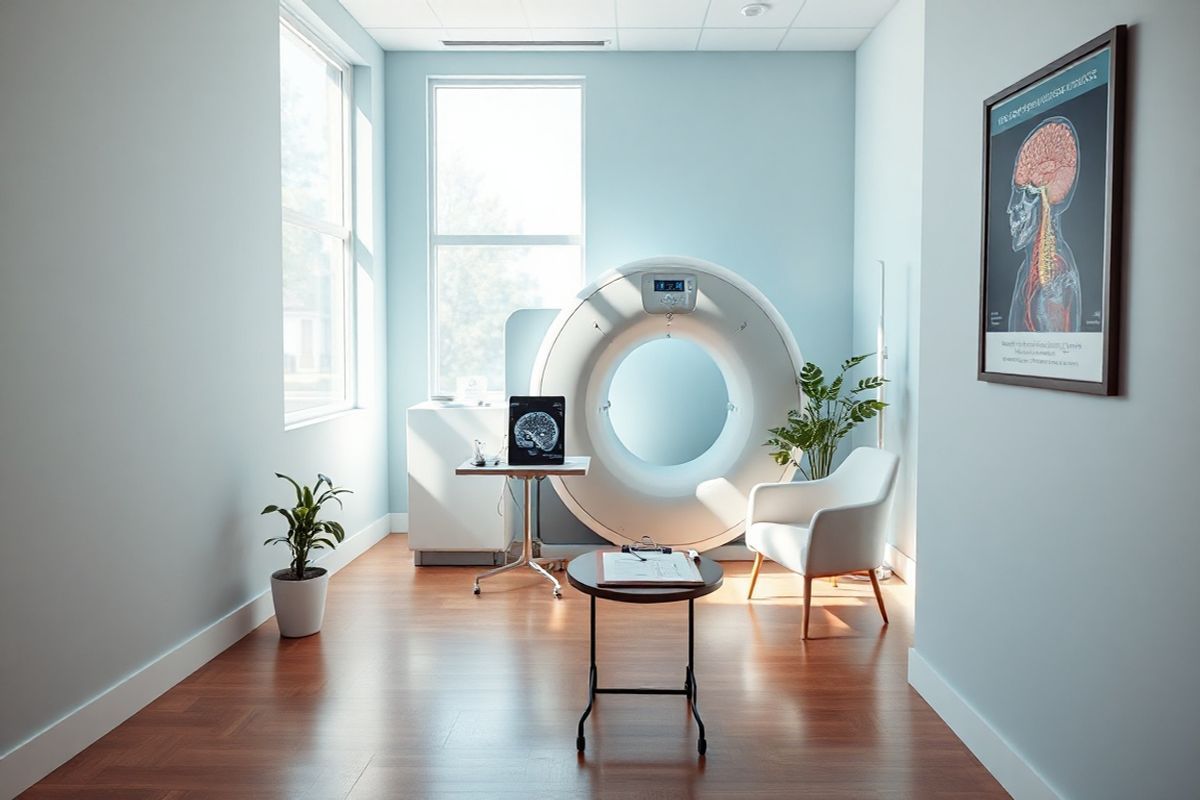Table of Contents
Understanding Cerebral Venous thrombosis: Causes and Symptoms

Cerebral venous sinus thrombosis (CVST) is a rare but serious condition that accounts for about 1% of all stroke cases. The primary cause of CVST is the formation of a clot in the brain’s venous sinuses, which can lead to a variety of symptoms due to the impaired drainage of blood from the brain. Factors contributing to CVST include genetic predispositions such as thrombophilia, certain medical conditions like cancer, infections, and use of oral contraceptives, particularly in individuals assigned female at birth (AFAB) who are pregnant or postpartum. Notably, it can also occur in children and young adults, often linked to dehydration or infections like COVID-19 (Cleveland Clinic, 2023).
Symptoms
The symptoms of CVST can vary widely, but common manifestations include:
- Headache: Often the most common symptom, which may be gradual in onset or sudden.
- Vision problems: Such as blurred or double vision, or even loss of vision.
- Neurological deficits: Weakness or numbness in one side of the body, difficulty speaking, or seizures.
- Increased intracranial pressure: Symptoms may also include nausea, vomiting, and altered consciousness.
Understanding these symptoms is crucial for early detection and treatment, which can greatly improve outcomes.
Essential Diagnostic Tests for Cerebral Venous Thrombosis: What You Need to Know

Diagnosing CVST involves a combination of clinical assessment and imaging studies. The following diagnostic tests are commonly employed:
- Magnetic Resonance Imaging (MRI): This is the most sensitive imaging modality for detecting CVST. MRI can show the presence of thrombus and associated complications such as hemorrhage.
- Magnetic Resonance Venography (MRV): Often performed alongside MRI, MRV specifically visualizes the venous system of the brain and can confirm the presence of clots.
- Computed Tomography (CT) Scan: While less sensitive than MRI, CT can still be useful, especially in acute settings. CT venography can also be performed to evaluate venous structures.
- D-dimer testing: Elevated levels of D-dimer, a fibrin degradation product, can suggest the presence of a thrombus but are not specific for CVST.
These tests are pivotal for confirming a diagnosis of CVST and ruling out other potential causes of neurological symptoms.
Preparing for Your Cerebral Venous Thrombosis Diagnostic Tests: Tips and Guidelines
Preparation for diagnostic tests is crucial for obtaining accurate results. Here are some tips for patients undergoing testing for CVST:
- Discuss Medications: Inform your healthcare provider about all medications, including over-the-counter drugs and supplements, as some may need to be paused prior to imaging.
- Hydration: Maintain adequate hydration before tests, especially before MRI or CT scans, unless otherwise instructed.
- Follow Dietary Restrictions: If sedatives or contrast agents are to be used, follow any dietary restrictions provided by your healthcare team.
- Arrive Early: Arriving early can help reduce stress and allow for any necessary paperwork or pre-test procedures to be completed without rush.
By following these guidelines, patients can help ensure that their diagnostic process goes smoothly.
Interpreting the Results: What Your Cerebral Venous Thrombosis Tests Mean
Interpreting the results of diagnostic tests for CVST requires understanding the implications of the findings:
- Positive MRI/MRV for thrombosis: A diagnosis of CVST is typically confirmed if thrombus is visualized in the venous sinuses. The extent and location of the clot can inform treatment options and prognosis.
- CT Scan Results: A CT scan may reveal hemorrhagic changes or signs of increased intracranial pressure.
- D-dimer Levels: Elevated D-dimer levels may support the diagnosis but should be interpreted in conjunction with imaging results.
The healthcare provider will use these findings to discuss the next steps in treatment and management.
Navigating Treatment Options for Cerebral Venous Thrombosis After Diagnosis
Once diagnosed with CVST, treatment options primarily focus on anticoagulation therapy to dissolve the clot and prevent further thrombus formation. The following treatment approaches may be considered:
- Anticoagulants: Medications like heparin or warfarin are the first line of treatment. Direct oral anticoagulants (DOACs) are also being explored for their efficacy and safety profiles.
- Thrombolytics: In severe cases or when there is significant risk of complications, thrombolytic therapy may be indicated to dissolve the clot more rapidly.
- Surgery: Surgical intervention, such as thrombectomy, may be necessary in cases where anticoagulation is ineffective or contraindicated, particularly if there is significant hemorrhage or increased intracranial pressure.
- Management of Symptoms: Addressing symptoms such as headaches or seizures may also be part of the treatment plan, often requiring additional medications.
The prognosis for patients with CVST can be quite good with timely and appropriate treatment, particularly when diagnosed early.
FAQs
What increases the risk of cerebral venous thrombosis?
Risk factors include genetic conditions (thrombophilia), pregnancy, recent surgery, infections, dehydration, certain medications (including oral contraceptives), and conditions like cancer or inflammatory diseases (Cleveland Clinic, 2023).
How is CVST diagnosed?
Diagnosis is typically made through imaging studies such as MRI, MRV, or CT scans, alongside clinical assessment and D-dimer tests.
What are the treatment options for CVST?
Treatment primarily involves anticoagulants, but thrombolytics and surgical options may be considered in severe cases.
Is CVST preventable?
While not all cases are preventable, managing risk factors such as maintaining hydration, avoiding prolonged immobility, and monitoring high-risk individuals can reduce the likelihood of developing CVST.
What is the prognosis for CVST?
With prompt diagnosis and treatment, the prognosis is generally favorable, though it can vary depending on individual circumstances and the extent of the thrombosis.
References
- Cleveland Clinic. (2023). Cerebral Venous Sinus thrombosis (CVST): Causes & Treatment. Retrieved from https://my.clevelandclinic.org/health/diseases/22560-cerebral-venous-sinus-thrombosis
- Yassin, W., Loedige, K. M., Wannan, C. M. J., Holton, K. M., Chevinsky, J., Hall, M. H., Ye, R. R., Kumar, P., Chopra, S., Kumar, K., Khokhar, J. Y., Margolis, E., & De Nadai, A. S. (2024). Biomarker discovery using machine learning in the psychosis spectrum. https://doi.org/10.1016/j.bionps.2024.100107
- Zhang, L., Deng, Y. T., Bai, X., Wei, X., Ren, Y. S., Chen, S., Deng, H. X. (2024). Cell therapy for end-stage liver disease: Current state and clinical challenge. https://pubmed.ncbi.nlm.nih.gov/11649288/
- Chaudhary, F., Agrawal, D. K. (2024). Anesthesia-induced Developmental Neurotoxicity in Pediatric Population. https://doi.org/10.26502/jsr.10020400
- Primary Cardiac Leiomyosarcoma Extending From Right Atrium to Inferior Vena Cava Without Metastasis: A Case Report. (2024). https://doi.org/10.7759/cureus.73826










